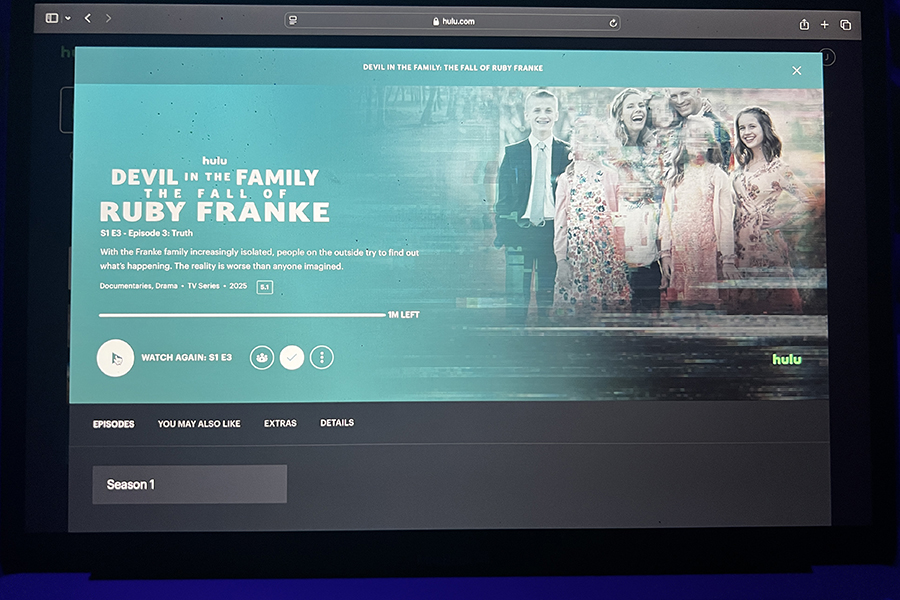Book Review: “Just Mercy”
Stories of Marginalized People and the American Criminal Justice System
Bryan Stevenson explores how African-Americans are often left unprotected and defenseless by the justice system in “Just Mercy,” a 2014 bestseller.
November 19, 2020
This year for English, the first book all the juniors read was “Just Mercy” by Bryan Stevenson. A New York Times Bestselling novel of 2014, “Just Mercy: A Story of Justice and Redemption” delves into themes of redemption, betrayal and discovery. It explores Bryan Stevenson’s criminal justice organization, the Equal Justice Initiative (EJI), and his career fighting for marginalized communities in the criminal justice system.
The book begins focusing upon his first case with Walter McMillian, a black man sentenced to die for a murder he did not commit. From there, Stevenson would continue to represent individuals from marginalized groups who were often mistreated in the unjust criminal justice system. Stevenson has authored numerous other books, including “4 Days 4 Nights 4 Ladies 4 Guys”; “A Perilous Path: Talking Race, Inequality, and the Law”; “Five Kids and One Gun: A Game to the Death and Hockey Like You Have Never Seen Before.”
Previously, I had read “All-American Boys” and “The Hate U Give,” which chronicled black teenagers grappling with police brutality in their respective communities. Upon being assigned “Just Mercy,” I was eager to learn more about how racism not only manifests itself through police brutality but also throughout the entire criminal justice system. This book — unlike in “The Hate U Give” and “All-American Boys” — is told through the eyes of a lawyer, and not through a victim’s friend. Because of this, readers are allowed to explore the recesses of the legal world to learn more about the specific practices and principles of the criminal justice world that disproportionately harm black and brown people.
“Just Mercy” opens up with Walter McMillian’s trial. A respected black businessman, McMillian fell from grace within his community after having an affair with Karen Kelly, a white woman. McMillian’s relationship with Kelly stoked racial tensions within their community, ultimately leading to a neighbor falsely accusing McMillian of murdering a white woman in Alabama. After persistent pleas from McMillan’s family, Stevenson picked up the case and succeeded in getting a retrial and appeal for McMillian.
For the remainder of his career, Stevenson continued to defend those who were viewed by the criminal justice system as indefensible. Guided by the principle that everyone deserved due process, he represented both the culpable and inculpable, the righteous and unrighteous. For example, Stevenson represented Herbert Richardson — a man who was accused of leaving a bomb outside his ex-girlfriend’s house — while also defending Joe Sullivan, a man who was falsely accused of raping a woman. No matter the circumstances, Stevenson approached all of his defendants with both fairness and tact — two qualities that black-Americans are not always shown in the criminal justice system.
“Just Mercy” is a standout book due to Stevenson’s keen ability to tell the stories of those whose stories often go untold. Stevenson writes in a conversational tone, making the stories he tells open and accessible to a wide variety of people, regardless of age or educational background. He evokes empathy from his readers by using pointed and descriptive language. Furthermore, he provides painstaking details about the life of the incarcerated and their experiences in the criminal justice system. In doing this, he does a good job humanizing incarcerated populations who are often poorly portrayed in the media. Since injustice in the criminal justice system is a heavy topic, Stevenson balances his writing by also injecting lighthearted anecdotes within the pages of “Just Mercy.” He recounts jovial conversations with his grandfather and laughs he has shared with Rosa Parks. Ultimately, these moments help to tame the immense emotionality of this book.
Though Stevenson does a good job of recounting his cases, it is worth noting that these cases occurred 30 years prior to him writing the book. This then raises questions about the accuracy of the events Stevenson presented throughout the novel. Despite this minor blip, Stevenson still delivers a powerful account of the racial injustice rampant in the criminal justice system.
I would rate this book four out of five stars because I like the cases that he chose. Stevenson made many voices heard, when nobody was willing to help them. Although his book is about the criminal justice system, he doesn’t describe much about himself, so we know very little about him.
This book could be read by high schoolers and above and readers can find the book on Amazon for $10.27 and Barnes & Nobles for $17.

![Posing with their UIL State Trophy, the Robolobos Van Halen Team beams with excitement after their win. “It was a team effort,” junior Noah Vo said. “I was happy because something happened in the first match and the match was also really close. So [when] they finally revealed it, I was pretty happy.” Photo courtesy of Amy Lovelace](https://cphswolfpack.com/wp-content/uploads/2025/05/IMG_0910-EDIT-1200x723.jpg)

![Broadcast, yearbook and newspaper combined for 66 Interscholastic League Press Conference awards this year. Yearbook won 43, newspaper won 14 and broadcast took home nine. “I think [the ILPC awards] are a great way to give the kids some acknowledgement for all of their hard work,” newspaper and yearbook adviser Paige Hert said. “They typically spend the year covering everyone else’s big moments, so it’s really cool for them to be celebrated so many times and in so many different ways.”](https://cphswolfpack.com/wp-content/uploads/2025/05/edited-ILPC.jpg)













![Bringing her arm over her head and taking a quick breath, junior Lauren Lucas swims the final laps of the 500 freestyle at the regionals swimming competition on date. Lucas broke the school’s 18-year-old record for the 500 freestyle at regionals and again at state with a time of 4:58.63. “I’d had my eye on that 500 record since my freshman year, so I was really excited to see if I could get it at regionals or districts,” Lucas said. “ State is always a really fun experience and medaling for the first time was really great. It was a very very tight race, [so] I was a bit surprised [that I medaled]. [There were] a lot of fast girls at the meet in general, [and] it was like a dogfight back and forth, back and forth.” Photo by Kaydence Wilkinson](https://cphswolfpack.com/wp-content/uploads/2025/03/Kaydence-2.7-23-edit-2.jpg)
![As the support team sits and poses for a photo in the cafeteria with the counseling team they eagerly wait to start their day. "We [all] seem to be a team, I get up every day and there's days where I don't want to go to work today, but I'm thankful that I have a job and I'm blessed to have what I have," Christopherson said. Photo Courtesy of Julie Weltens.](https://cphswolfpack.com/wp-content/uploads/2025/01/AF9E8470-10D7-4C91-BF28-EC8F86BAB66C-1200x852.jpeg)
![Officer Stephanie Cash is in her second year as an SRO at CPHS. “Seeing [students] grow over the years has been kind of cool,” Officer Cash said. “Freshmen that [are] all over the place and then in the next couple of years get a little more squared away and go to class and do work and start thinking about the future. Being a part of a student's growth is the best way to measure my success as an SRO.” Photo Courtesy of Cedar Park Police Department's PIO, Alicia Gallagher.](https://cphswolfpack.com/wp-content/uploads/2024/12/CPHS-SRO-900x1200.jpg)



![Taking a breath as he raises his arm up and out of the water, sophomore Kaden Padilla swims the 500 freestyle at the UIL state meet on Feb. 21-22. Padilla placed 10th overall and second in the consolation final in the event, dropping two seconds. “My family was there, so being able to drop time for them was really special,” Padilla said. “It was awesome [finding out I advanced to the consolation finals]. I wasn’t expecting it, and I was very surprised. My parents being there definitely made me a lot happier knowing they got to see me swim in finals.” Photo by Skyler King.](https://cphswolfpack.com/wp-content/uploads/2025/03/kaden-padilla.jpg)

![Three defenders try to stop senior point guard Hope Edwards before the ball leaves her hands. The girls basketball team faced Liberty Hill on Feb 21, losing 58-40. “[My season was] definitely bittersweet,” Edwards said. It's definitely sad [because] I'm gonna miss all my teammates, my coaches and just the whole CP environment.”](https://cphswolfpack.com/wp-content/uploads/2025/03/julia-128-1200x800.jpg)


























![Whereas classical art depicts a scene and tells a story, often of mythology or religious references, artists of modern times focus more on expressing ideas and feelings. The style of back then has since been replaced by splashes of color, curvy lines and other new art techniques. "[Over time] I think art has shifted more to emotion rather than human beauty, " sophomore Braeden Murray said. "Modern art is significantly more abstract and doesn't have an obvious theme in mind. Very simple shapes, no people to be seen, and more colorful. I think in the older [time period] the art was definitely more human based, with biblical [references] while modern art is more emotion based because it's not depicting a particular scene or action that's happening.”](https://cphswolfpack.com/wp-content/uploads/2023/02/2023-vs-1503-300x200.png)





